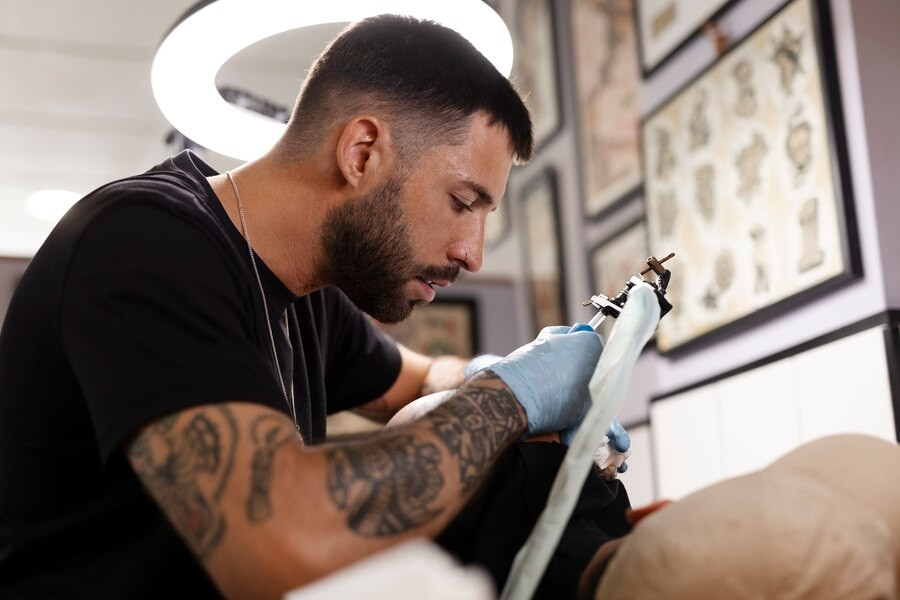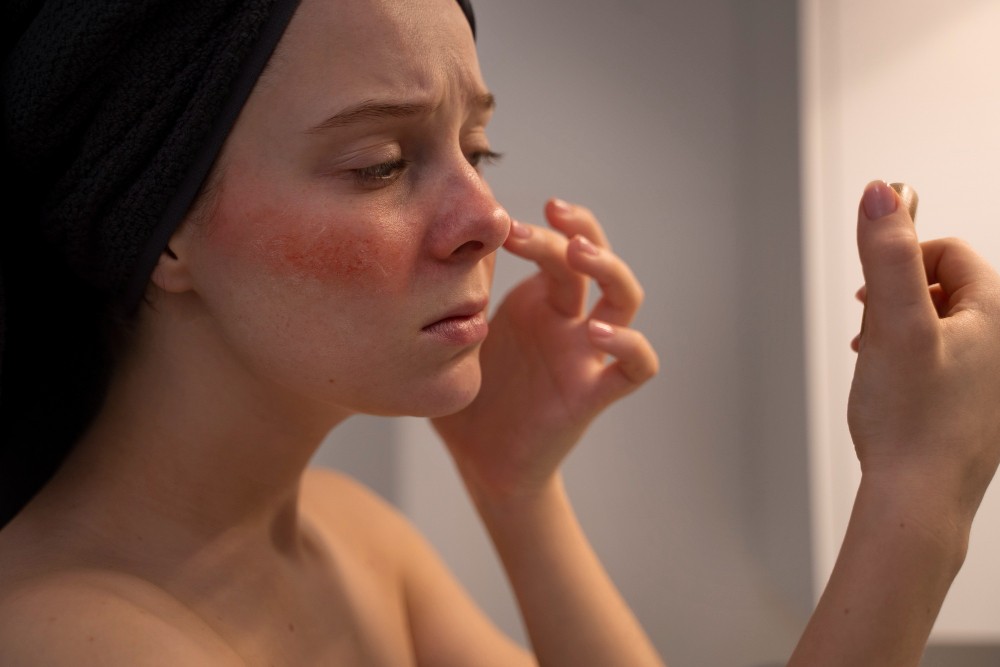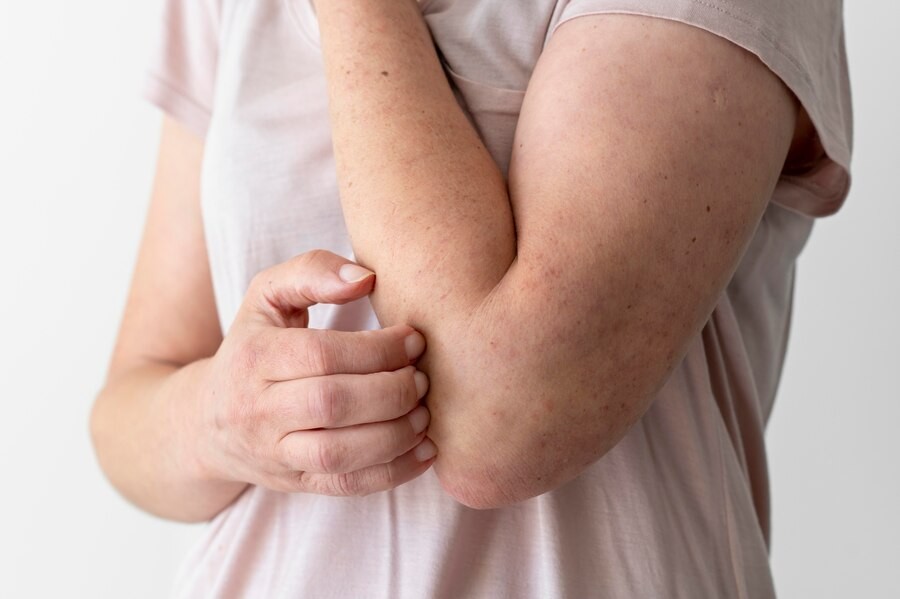Tattoos are considered a form of art on the body. The tattoo artist will create an image on the skin by piercing the skin using a needle and injecting tattoo ink into the layers of the skin. The needle tattoo technique is known as a type of permanent tattoo that will remain on the skin and is very difficult to remove.
For some people, tattoos are an expression of art and culture so it is an individual preference to have them or not. However, it is important to know that getting a tattoo comes with its own health risks. Know what the health risks are before deciding to get one.
Health Risks of Body Tattoos
In the modern world, tattoos can be made using specialized handheld machines that act like sewing machines. Modern tattoo machines use an electromagnetic coil with one or more needles that puncture the skin repeatedly and up and down, allowing the ink to penetrate into the layers of the skin.
The use of a tattoo machine gives more detailed and smooth results. However, because the machine's needle will be in direct contact with the skin, there can be certain health risks from the tattooing process, including:
Allergic reaction
One of the most common side effects of getting a tattoo is an allergic reaction that may be caused by the tattoo's coloring ink. Red ink is the most common allergy-causing substance.
Allergic reactions can appear days, weeks, or months later after tattooing. Symptoms generally only affect the area of skin around the tattoo. The allergic reactions experienced vary from mild to severe. Tattoos can also make skin conditions such as eczema more severe.
Symptoms that can arise from mild allergic reactions include:
- Itching
- Rash or bumps
- Redness and irritation
- Skin peeling
- Swelling
- Scaly skin in the needlestick area
It is recommended to seek medical attention if you experience more severe allergic reaction symptoms such as the following:
- Severe itching
- Burning around the tattoo
- Swelling around the eyes
- Difficulty breathing
Skin infection
In addition to allergic reactions, the tattooing process can also cause infections in the needle marks. This infection is usually characterized by redness, irritation, and itchiness in the tattooed area. Generally, the symptoms are not only in the tattooed skin area but can extend and cause symptoms in the body, such as fever, chills or enlarged lymph nodes.
Compared to allergic reactions, infection symptoms usually last longer, ranging from a few days to a few weeks or more. Generally, infection can occur due to using dirty tools, contaminated ink, unsterilized water, or skin that was not cleaned before tattooing. Infections can also arise during the healing process of the skin after tattooing.
The appearance of keloids
Keloids occur due to abnormal wound healing in response to an injury or inflammation of the skin. Keloids can appear after tattooing. Keloids are characterized by protruding and thickened skin, with a smooth surface and may extend beyond the original wound area.
A person may be more at risk of keloids if a family member has keloids, or has a tattoo on the upper chest, shoulder, neck, or upper arm area.
Blood-borne diseases
When tattoo artists do not use sterile equipment or do not adhere to tattoo safety standards, the risk of blood-borne disease transmission increases. Several diseases such as hepatitis B, hepatitis C, MRSA (Methicillin-Resistant Staphylococcus aureus infection), and HIV are very likely to be transmitted when tattoo equipment is contaminated with infected blood, and not properly cleaned and sterilized.
To avoid these transmission risks, it is very important to choose a professional and licensed tattoo artist. In addition to using sterile tools and new needles, it is recommended that you have undergone hepatitis and tetanus vaccines before tattooing.
Affects MRI Examination
MRIs use powerful magnets and radio frequency waves to show images of the inside of the body. Decades ago, tattoo inks were still unregulated so sometimes there were inks that contained small amounts of metal fragments. It is theorized that the strong magnetism and metal fragments of tattoo ink could interact and cause the following:
- Tattoo pigments contain metal fragments that respond to MRI magnetic fields or radio waves, where the strong magnetism of the MRI will attract the metal fragments of the tattoo pigments, causing burning at the tattoo site during the examination.
- Metal fragments in the tattoo in certain areas can also interfere with the quality of the images produced.
Now that tattoo ink regulations have been implemented, tattoos should no longer contain metal fragments. Getting a tattoo in the last 20 years will not cause any problems when you have an MRI examination. However, it does not hurt to inform the doctor or MRI technician if you have tattoos on any area of the body, especially on areas that require examination.
If you need medical advice or consultation, you can either visit a doctor or make use of the consultation features that are available in the Ai Care application by downloading the Ai Care application from the App Store or Play Store.
Looking for more tips and tricks for health, first aid, and other home remedies? Click Here!
- dr Hanifa Rahma
Mayo Clinic (2022). Tattoos: Understand risks and precautions. Available from: https://www.mayoclinic.org/healthy-lifestyle/adult-health/in-depth/tattoos-and-piercings/art-20045067
Kids Health (2022). Tattoos. Available from: https://kidshealth.org/en/teens/tattoos.html
Tim Jewell (2023). How to Identify and Treat a Tattoo Allergy. Available from: https://www.healthline.com/health/tattoo-allergy
Shishira Sreenivas (2022). Tattoo Side Effects: Infections, Allergic Reactions, and Other Issues. Available from: https://www.webmd.com/skin-problems-and-treatments/tattoos-what-you-need-know
Stephani Watson (2018). What’s the Relationship Between Keloids, Scars, and Tattoos?. Available from: https://www.healthline.com/health/keloid-tattoo
Flyn Williams (2021). What to know about tattoos and hepatitis C. Available from: https://www.medicalnewstoday.com/articles/hep-c-and-getting-tattoos
Karen L. Hudson (2021). Do Tattoos and MRI Scans Interact?. Available from: https://www.byrdie.com/tattoos-and-mri-scans-3187334












